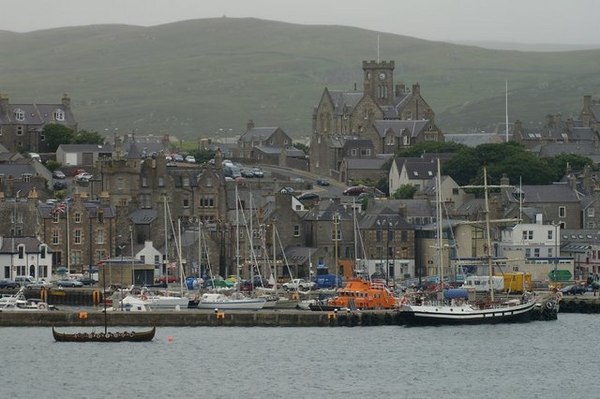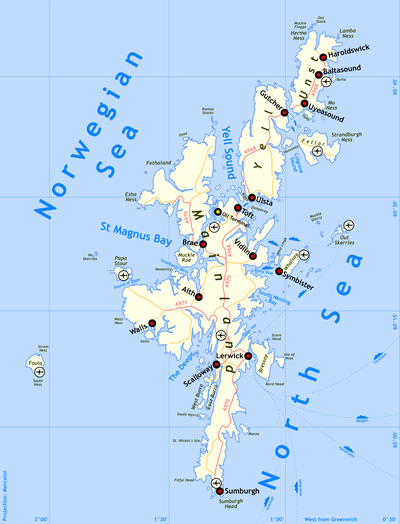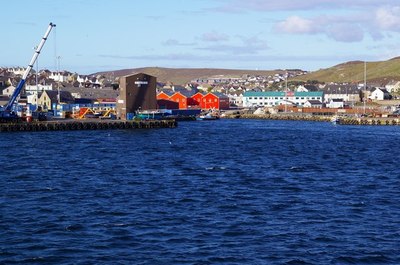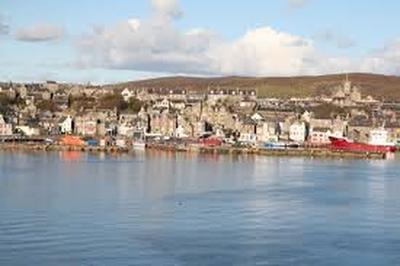
View all banners
FAFB will never call you and ask for your credit card details over the phone. If this happens, hang up!


As the most northerly commercial fishing port in the British Isles, Lerwick has a unique advantage over others harbours with its prime location. Situated 210 miles off the coast of Aberdeen, 230 miles from Bergen, Norway and 230 miles from Tórshavn in the Faroe Islands,the port is ideally positioned for access to the North Sea, Norwegian Sea and the North Atlantic.
The capital of the Shetland Islands, Lerwick has a long history of fishing which dates back to the 16th century when Dutch fishermen began to harvest the waters around the Bressay Sound. Rich with herring the development of a profitable port was inevitable.
Today, the fishing industry is still a principal industry on the island and provides an income of around £300m to the local economy. The main bulk of landings is still in herring and mackerel making up around 60% of the annual catch. The port also brings in sizeable volumes or shellfish, and bottom dwelling whitefish like cod, monkfish and haddock. As well as the income from the price of the harvested fish, Shetland also hosts farming and processing industries alongside the thriving aquaculture industry; 25,000 tonnes of salmon is farmed annually with major investments in mussel farming being highly successful.
Lerwick is the second largest port in the United Kingdom in terms of its contribution to the annual landings. In 2014, the harbour brought in 49,000 tonnes of fish with an estimated total revenue of £46.7 million.
In this focus piece, we look at the history of Lerwick, its importance in the UK’s fishing sector and take a snapshot of the port itself.

Bressay Sound, situated between Lerwick and the island of Bressay is a sheltered stretch of water that provides essential shelter from the North Sea. It has been known to have been used by sailors as an area of refuge since the time of the Vikings who regularly used the Bressay Sound. It is reputed to be the case that the name of Lerwick can be attributed to these early Norse raisers who dubbed the area Leir Vik or ‘muddy bay’.
In the early part of the 17th century it was another nation that discovered the plentiful bounty off the shores of the Shetland Isles. Dutch herring boats became regular visitors under the to the shores and used the bay at Lerwick during the summer to take shelter from the seas.
The hamlet around the bay grew under the influence of the Dutch and became an unofficial marketplace which was razed to the ground in 1615 by order of the, then, capital of Scalloway. Lerwick also came under fire in 1702 when the French burnt the fishing fleet. Despite the challenges, the fishing trade thrived and for over 200 years, herring provided the islands with an economical backbone. Locals traded with the various merchants that were prevalent at the time under whichever rule they fell under (Scotland, Denmark and England were all involved in using the islands as territorial pawns in political negotiations).
Following increased activity in cod fishing, whaling and trading in dried fish, the herring boom ended in 1842 with financial disaster. There followed a period of thirty years of austerity on the islands as the fishing industry struggled to come to terms with the change in their fortunes. The additional pressures of potato blight and famine resulted in a large exodus of Shetlanders to the mainland as well as remote counties like Canada, New Zealand and Australia. One generation later, in 1875, mainland vessels began using the port of Lerwick which revived the herring industry. By 1881, the increase in sailings to the mainland further improved the economy as Shetland fishermen could now compete in the fresh fish markets.
By 1894, following the arrival of steam trawlers in Shetland waters the herring boom boosts investment in the local port as it begins to accommodate foreign vessels from Ireland, Denmark, Sweden, Germany and Norway. At the peak of the season, as many as 9000 fishermen descend upon Lerwick.
The authorities capitalised on this surge in the economy and, as the British Monarchy changed from the Victorian era to the Edwardian, a new fish market is built at Freefield.
Herring continued to be the main source of income but began to decline by the 1930’s.
In 1959, work began on a new covered fish market which would eventually open in 1975, some eight years after the first purse seiner joins the Shetland fishing fleet.
By the early 1980’s Lerwick had become home to the Klondyke factory ships and in 1989 Shetland Catch opened the purpose built pelagic fish factory.
The Shetland Museum and Archives has an amazing collection dedicated to telling the rich history of fishing on the islands and includes very early indigenous artefacts used in local fishing through to examples of whaling harpoons used in the early 20th century.
The importance of fishing in Lerwick and across the Shetland Isles is a story of both necessity and exploiting the coveted position of their port.
As well as fishing boats the port at Lerwick has also hosted a variety of other vessels over its long history including cargo boats, cruise ships, boats of war as well as roll on/roll off ferries. The port is also an important strategic hub for oil related vessels and drilling rigs. In fact, as the economical, political and social face of Shetland has changed, so too has the harbour.
The port accommodates around 2000 fishing vessels over the course of a year and is home to Europe’s largest fish processor, Shetland Catch. This modern processing factory is capable of receiving herring and mackerel within hours of being caught via its deep discharge berth. Trawlers can offload up to 100 tonnes an hour. There is also a fishmeal plant at Bressay where industrial species can be landed direct to the factory.
With such swift processing and its direct links to the mainland, the quality and freshness of the fish landed at Lerwick has earned itself a high reputation.
The port has won several awards and offers extremely good facilities including deep water berthing, onshore weighing and grading as well as the access to the quayside fish processing and factory.
The port has a high capacity ice plant and can offer both engineering and electronics repairs as well as facilities for wire rigging and net manufacture.
There is a modern fish market operating five days a week that is temperature controlled and is home to Shetland Seafood Auctions; the latter is a major draw for Scandinavian vessels.
With its prime location at the Northern edge of the British Isles, it’s easy to see why Lerwick is such a successful and popular fishing port. Vessels can gain quick access to fishing grounds and minimise their day-at-sea allowances as well as save money on fuel costs.

With over 170 local commercial fishing vessels calling Lerwick home, the Shetland Fishermen’s Association is proud of the diversity of its 80 member strong fleet; from the 73m pelagic trawler, the Zephyr built in 1996 to the 6-10m long shellfish boats like Ivy Leaf (built in 1973) and Adorn. There are constant changes to the face of the fleet including the recent addition in August 2016 of the New Resilient, a 27m seiner/trawler built in Whitby. Though she will be docked at Symbister, she will use the facilities at both Lerwick and Petershead.
Find a Fishing Boat has an active membership in the Shetlands with plenty of commercial and private fishing boats for sale.
